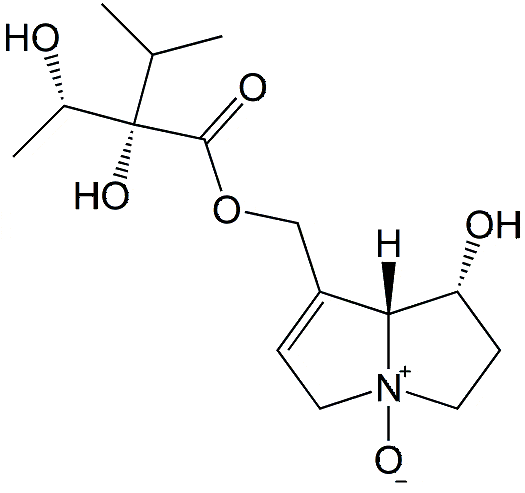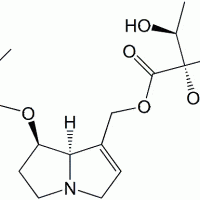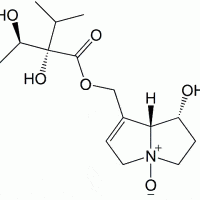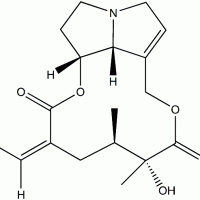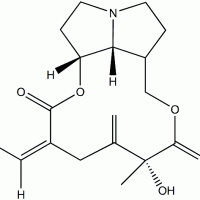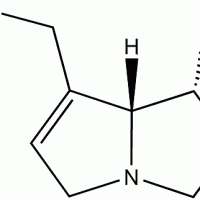- Required Weight missing.
Abstract
Pyrrolizidine alkaloids are secondary metabolites in plants; about half of these alkaloids exhibit toxicity and carcinogenicity. Pyrrolizidine alkaloids poison grazing animals and domestic livestock through contaminated plants or feed. These alkaloids then poison humans through contaminated food (e.g., grains, honey, and milk), herbal medicine, and supplements. The compounds are epimeric monoesters in retronecine-type pyrrolizidine alkaloids. Intermedine and lycopsamine and the N-oxides, Intermidine N-oxide and Lycopsamine N-oxide (CAS 95462-15-0), are the predominant pyrrolizidine components of interest in comfrey (Symphytum officinale). Intermedine and lycopsamine inhibit the ability of hepatocyte cells to proliferate, colonize, and migrate. These alkaloids also induced hepatocyte apoptosis, indicating they are the cause of hepatotoxicity. Intermedine and lycopsamine are more often found in their oxidized form in plant material: Intermedine N-oxide and Lycopsamine N-oxide.
See our entire collection of Pyrrolizidine Alkaloids reference standards.
Compound Details
| CAS | 95462-15-0 |
|---|---|
| Molecular Weight | 315.36 |
| Chemical Formula | C15H25NO6 |
| IUPAC | [(7R,8R)-7-hydroxy-5,6,7,8-tetrahydro-3H-pyrrolizin-1-yl]methyl (2S)-2-hydroxy-2-[(1S)-1-hydroxyethyl]-3-methylbutanoate |
| Synonyms | (+)-Lycopsamine N-Oxide |
| SMILES | CC(C)C(C(C)O)(C(=O)OCC1=CC[N+]2(C1C(CC2)O)[O-])O |
| Purity | 95%+ |
| Storage Temperature | Below -18 degrees C |
| Storage Conditions | Dry, freezer |
Product Documents
Product Use Disclaimer
Products are sold as laboratory reference materials, to be used for diagnostic and in vivo testing. The samples are not certified for veterinary or human use.
$42.00 - $56.00 / milligram
| Range (milligram) | Price ($/milligram) |
|---|---|
| 5 - 24 milligram | $56.00 / milligram |
| 25 - 99 milligram | $52.50 / milligram |
| 100 - 249 milligram | $49.00 / milligram |
| 250 - 499 milligram | $45.50 / milligram |
| 500 - 1000 milligram | $42.00 / milligram |
Technical Support
Product information is from published literature. Due to the nature of scientific experimentation, results or specific product application may vary (e.g., selectivity, detector response). If you have questions about the product, its application, and associated analytics, please contact our technical support team.
Related products
-
View Item
Retrorsine N-oxide – CAS 15503-86-3
PRICE ON REQUEST -
View Item
Echimidine – CAS 520-68-3
$26.00 - $39.00 / milligram -
View Item
Intermedine N-oxide – CAS 95462-14-9
$41.50 - $55.00 / milligram -
View Item
Senecionine – CAS 130-01-8
$15.50 - $21.00 / milligram -
View Item
Seneciphylline – CAS 480-81-9
$17.00 - $32.00 / milligram -
View Item
Retronecine – CAS 480-85-3
$42.00 - $69.00 / milligram -
View Item
Echiumine – CAS 633-16-9
$26.00 - $39.00 / milligram


